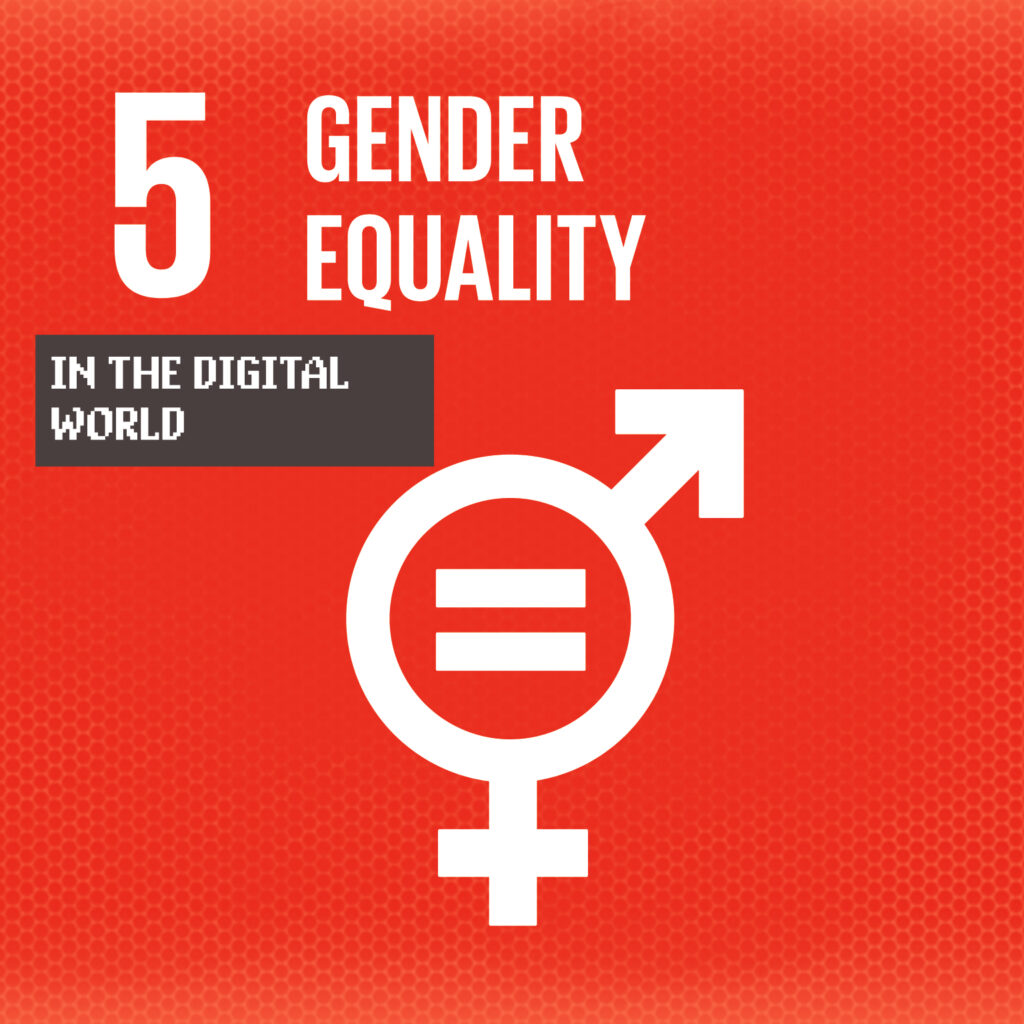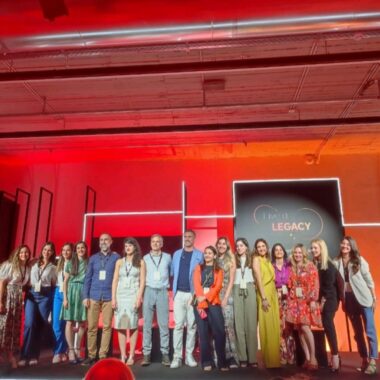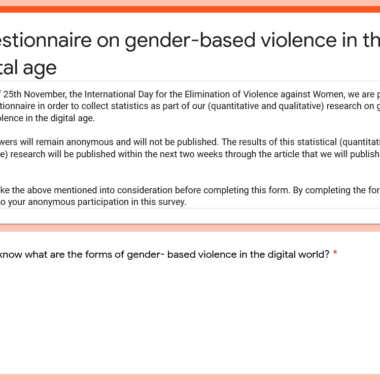By Anastasia Karagianni*
27/01/2021
From ”The Suppliants” of Aeschylus to Catherine D’Ignazio and Lauren F. Klein’s book ”Data Feminism”, the status of women in society may have improved significantly, but the question of gender equality remains. After a brief historical review, one can see that both in Greece and in Europe, as well as worldwide, girls and women are treated in a discriminatory way by state mechanisms and private bodies, in education, health, social welfare, political participation and justice. Many of these inequalities between men and women have been reflected online and in the digital space.
It is true that one of the positives of the Ιnternet is that it has stimulated women’s participation in public and political life with access to information. However, women have less access opportunities to digital space and the Internet than men, while gender-based violence is mainly taken place against women and is an inhibitor to their participation in the “digital life”. According to the International Telecommunications Union (ITU), the percentage of women who use the internet worldwide is 48%, compared to 58% of men. The global gap between male and female Internet users is 17%. This gap is due to the rapid increase of the number of male Internet users in developing countries, while almost worldwide more men than women use the Internet. Thus, this gender gap is small in developed countries and large in developing countries. In USA, this gap is around zero between the period of 2013 and 2019 and has shrunk in the Commonwealth of Independent States (CIS) and in Europe. However, in the Middle East, Asia, the Pacific and Africa the gap is widening.

@ITU
The barriers that women face in accessing the Internet and digital technologies continue to create unequal opportunities and create significant gaps in the digital empowerment of girls and women around the world. The cost of access to information and communication technologies (ICT), caused by the limited purchasing power and financial independence of women over men, remains a burning issue. However, this challenge has been recently overcome as research shows that a lack of understanding, interest or time is more often cited as a reason for not using the Internet than financial reasons. Nevertheless, it is not strange why women do not have free time/or the same amount of money to spare online and they are not interested in engaging with digital technologies. The answer is patriarchy, patriarchy, patriarchy…
Women are weak in the digital environment. The victims of cyber violence are mainly women. Violence against women online includes cyberbullying, privacy breaches, sexual harassment and the use and display of personal information, including images and videos without the prior consent of the persons pictured (see revenge porn ). Especially in the latter case, the victims are only women. Let us not forget how many women committed suicide after being victims of gender-based violence online, nor of course how many women face with physical violence besides online violence, while many of them have been were killed out of jealousy, revenge, humiliation, etc. Femicide is not a crime of passion. It is a murder (fullstop!).

Red shoes- Mexico (protest about femicides in Mexico) @EI Universal
The Report of the United Nations Special Rapporteur, Ms. Dubravka Šimonovic, for 2016 on violence against women, its causes and consequences, pointed out that online violence against women is the new challenge. The report states that “while the use of information and communication technology has contributed to the empowerment of women and girls, its use has also intensified cyberbullying”, calling stakeholders to “fight cyberbullying against women and girls with respect to freedom of expression and the prohibition of incitement to violence and hatred “.
The Report of the United Nations Special Rapporteur, Ms. Dubravka Šimonovic, for 2018 on violence against women, its causes and consequences, noted that there are many emerging forms of cyberbullying against women and girls, such as doxing, sextortion. and trolling. However, there are also some forms of violence against women that are not entirely new but have appeared digitally (such as cyberbullying and cyberstalking). Via technological means, various forms of gender-based violence can be committed remotely, without physical contact. The use of anonymous profiles (the issues of anonymity) burdens the victim’s position as well as the search for the perpetrator becomes excessivly difficult. The Report emphasises that human rights standards must be fully respected in all forms of gender-based violnce online against women and girls and that specific legislative measures must be adopted at national level.

@UN Women
In 2018, the United Nations Human Rights Council (UNHRC) adopted the Resolution “Accelerating Efforts to Eliminate Violence Against Women and Girls: Preventing and Addressing Violence Against Women and Girls in Digital Environments“. In the Resolution the main forms of violence, abuse and discrimination faced by women in digital environments are listed, such as harassment, intimidation, threats of sexual harassment and sexual violence, death threats, arbitrary or unlawful stalking, human trafficking, censorship, personal data violations and hacking of digital accounts, mobile phones and other electronic devices and media.
The Resolution also encourages private actors to apply the business best practices and human rights standards in order to protect the personal data of women and girls, to establish transparent and effective procedures for reporting violence, and to develop policies that effectively protect women and girls from violence in the digital environments. Creating a safer online and digital environment with the cooperation of all stakeholders on the Internet is a key issue and can be considered as the first step for the effective implementation of human rights and the digital empowerment of women.
Nevertheless, it is worth noting that even women who decide not to connect online are vulnerable compared to male users, according to the CTV and the State of Broadband 2019 Report. Women who do not have digital skills may not be fully aware of the cyber and digital risks, such as how their personal data can be leaked and breached, or about what they should be very careful when they share their personal data. For example, surveillance applications that are typically installed on cell phones can be used by men to monitor women’s movements and activities, often without their knowledge. In cases where smart home assistants have been used, more cases of domestic violence have occurred following the breach of locks, cameras and other devices connected to the Internet.Women need to improve and develop their digital skills in order to be able to protect themselves from forms of exploitation and abuse facilitated by the use of the Internet, to be able to identify relevant incidents when they occur, and to take steps to protect themselves access to remedies.
The protection of women’s digital rights is part of a wider socio-cultural and professional action, as more and more groups of women focus on reducing discrimination and reducing prejudices in the exercise of rights, including access to educational and financial opportunities. in holding positions and in equal pay. Both public and private actors need to treat women equally in the digital world, in automated technology decision-making systems and in algorithms. United Nations has been allied with this effort, since United Nations Women’s work is in accordance with Sustainable Development Goal (SDG) number 5 about gender equality.
The 2030 Agenda for Sustainable Development, adopted by all United Nations Member States in 2015, provides a shared blueprint for peace and prosperity for people and the planet, now and into the future. At its heart are the 17 SDGs, which are an urgent call for action by all countries – developed and developing – in a global partnership. They recognize that ending poverty and other deprivations must go hand-in-hand with strategies that improve health and education, reduce inequality, and spur economic growth – all while tackling climate change and working to preserve our oceans and forests. We strongly believe that SDGs, and in general human rights, should be adjusted according to digital challenges set by new technologies.

@DATAWO
The main international legal framework for the protection of women’s rights is set by the UN Convention on the Rights of Women in 1952 and th United Nations Convention on the Elimination of All Forms of Discrimination against Women in 1979. Both United Nations Women and the United Nations Human Rights Council work actively on various aspects of women’s rights. Empowering women online is also supported by the World Wide Web Foundation’s Women’s Rights Online: Raising Voices.
As the women’s rights movement has matured, women’s groups are called upon to address and approach women’s rights from a gender perspective. Human rights issues regarding gender equality include access to information, career opportunities, participation in decision-making procedures, political participation, and other human rights about Internet governance should be studied and treated accordingly. Every group of people should be included in this dialogue, like LGBTGI community, and not excluded!
DATAWO is called upon to take on this role. The initiative that we founded with responsibility and a lot of love for the subject of our studies and our work, human rights. It is an initiative about the digital empowerment of women- every person who identifies themselves as woman- and the awareness of the Greek society about corresponding issues.
*Anastasia Karagianni is co-founder of DATAWO and is currently working on her research project about gender equality in digital environments.




